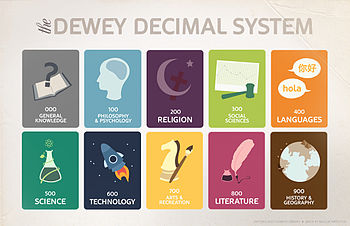Animal Sacrifice in the 20th and 21st Century
 |
| Laika, the most famous animal Astronaut via: <https://timedotcom.files.wordpress.com/2014/11/laika.jpeg?quality=65&strip=color&w=1100> |
Space is infinitely vast, yes. Space has had an influence on art, media and design, yes. But what really intrigued me this week was not those facts or 'Powers of Ten' (I rewatched this for the Nanotech + Art unit, as I found it just as fitting there as well) but rather in learning how countless animals were used, often with no intent for their safe return, in the space industry to test the safety of their space exploration equipment. Professor Vesna highlighted one very important and well known astronautical pooch, Laika, and her story, and I was then inspired to look into some lesser known animals that also went to space to help progress mankind's understanding of space exploration technologies. [1]
Here are some notable animal space pioneers:
 |
| Dezik and Tsygan, the first living space travelers. via: <http://todocaninos.com/wp-content/uploads/2014/07/DezikyTsygan.jpg> |
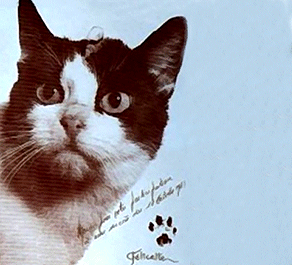 |
| Felicette sporting her brain electrode in this signed glamour shot; her autograph is unverified for authenticity. via: <http://sixtiescity.net/Space/Felicette.gif> |
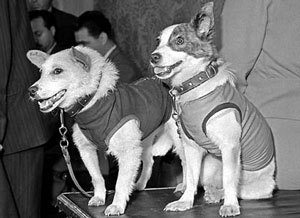 |
| This time they made custom space vests, so Belka and Strelka have a quite official looking photo via: <http://www.dogingtonpost.com/wp-content/uploads/2012/08/belkastrelka.jpg> |
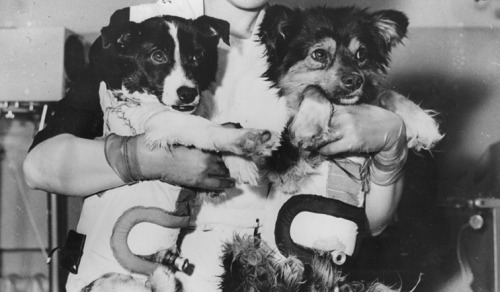 |
| These dogs had a proper space exploration; 22 whole days in orbit. <http://24.media.tumblr.com/tumblr_lj80frpCoZ1qiwh6to1_500.jpg?__SQUARESPACE_CACHEVERSION=1329920596441> |
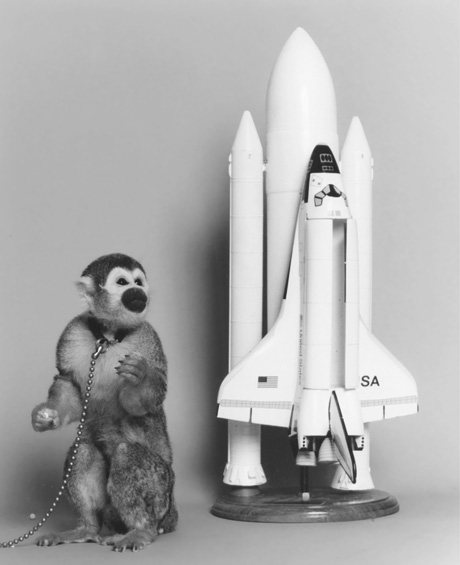 |
| Gordo here, optimistically staring far off into the distance <http://cabinetmagazine.org/issues/34/c12-3_FINAL.jpg> |
 |
| Testing Ham's safely equipment (they finally figured out those parachutes) via: <http://i.ytimg.com/vi/FyjDJIH4zXM/hqdefault.jpg> |
Not all of these animals died, but many more were killed than named here. After reading Ham's story, I realized some were never even named. But all of them suffered the unusual circumstances of going into space on experimental technology. Not by choice or for personal glory, as human astronauts have, but they were sent unknowingly as a sacrifice for mankind. Though most cultures of the world have stopped using animal sacrifices to appease the angry gods of ancient times, we still offer these animals for the glory of a new deity, technology.
References ::
[1] Vesna, Victoria, narr. “8 Space pt 3” N.p., . web. 5 Nov 2012.
[2] "Russian Space Dogs." Russian Space Dogs. Web. 31 May 2015.
[3] "First Monkey in Space." Universe Today. 31 Aug. 2009. Web. 31 May 2015.
[4] "Purr-n-Fur UK | Felicette the Space Cat, and the Mythical Felix." Purr-n-Fur UK | Felicette the Space Cat, and the Mythical Felix. Web. 31 May 2015.
[5] "Belka & Strelka: The First Dogs in Space - The Dogington Post." The Dogington Post. 25 Aug. 2014. Web. 3 June 2015.
[6] "Veterok and Ugolyok." Zoom Room Dog Training RSS. Web. 3 June 2015.
[7] Burgess, Colin, and Chris Dubbs. Animals in Space: From Research Rockets to the Space Shuttle. Print.
[8] Haraway, Donna. Primate Visions: Gender, Race, and Nature in the World of Modern Science (New York: Routledge, 1989).








